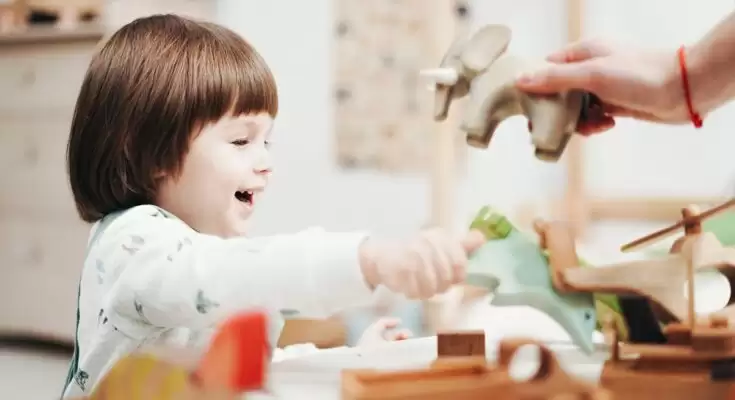As parents, we want to provide our children with toys that not only entertain but also promote their development and learning. However, with the overwhelming number of options available, it can be challenging to choose the perfect toys that align with our child’s interests and age-appropriate needs. In this blog post, we will guide you through the process of selecting toys for kids that are engaging, educational, and suitable for your child’s growth and enjoyment.
1. Consider Age-Appropriate Toys
When selecting toys, it’s crucial to consider your child’s age and stage of development. Age guidelines provided by toy manufacturers can help determine the suitability of a toy. Younger children may benefit from toys that stimulate their senses, such as soft toys, rattles, and colorful mobiles. Toddlers may enjoy toys that encourage exploration and fine motor skills, such as shape sorters, stacking toys, and building blocks. Older children may be ready for more complex toys that promote creativity, problem-solving, and social interaction, such as art supplies, puzzles, and board games.
2. Encourage Open-Ended Play
Open-ended toys are those that allow children to use their imagination and creativity to play in a variety of ways. These toys can be used for multiple purposes and have no predetermined outcome, allowing children to explore and experiment freely. Examples of open-ended toys include building blocks, play dough, dress-up costumes, and simple dolls or action figures. Open-ended play fosters problem-solving skills, divergent thinking, and the ability to create narratives, supporting overall cognitive and social-emotional development.
3. Promote Hands-On Learning
Toys that promote hands-on learning provide children with opportunities to engage actively in the learning process. Look for toys that involve manipulation, exploration, and problem-solving. Construction sets, science experiment kits, and art supplies are great examples of toys that encourage hands-on learning. These toys stimulate critical thinking, creativity, and fine motor skills while making the learning experience enjoyable and interactive. Learning Toys for Kids are most famous and best to gift any kid.
4. Balance Entertainment and Education
Finding a balance between entertaining and educational toys is essential. While it’s important for toys to capture a child’s interest and engage them in play, they should also offer some educational value. Look for toys that align with your child’s interests while incorporating elements of learning. For example, if your child enjoys building and construction, consider construction sets that promote spatial awareness and problem-solving. If they have an interest in animals, choose toys that teach about different species or animal habitats. This balance ensures that your child is having fun while also acquiring knowledge and skills.
5. Consider Social Interaction
Toys that encourage social interaction play a vital role in a child’s development. Look for toys that promote cooperative play, communication, and teamwork. Board games, pretend play sets and sports equipment are excellent choices for fostering social skills and building relationships with peers. These toys teach children about taking turns, sharing, and resolving conflicts, helping them develop important social and emotional skills.
6. Prioritize Safety
When selecting toys, always prioritize safety. Choose toys that are made from non-toxic materials and meet safety standards. Avoid toys with small parts that can be a choking hazard, especially for younger children. Check for any age-specific warnings on the packaging and ensure the toy is appropriate for your child’s age and developmental stage. Regularly inspect toys for wear and tear, and replace any damaged or broken toys immediately.
7. Follow Your Child’s Interests and Passions
Consider your child’s interests, passions, and hobbies when selecting toys. By choosing toys that align with their likes and curiosities, you can nurture their natural talents and promote their engagement and motivation. If your child loves animals, for example, consider animal-themed toys, books, or puzzles. If they enjoy music, musical instruments or music-themed toys can be a great choice. By following their interests, you can provide them with toys that will captivate their attention and encourage further exploration.
8. Read Reviews and Seek Recommendations
Before purchasing toys, take the time to read reviews from other parents and caregivers. Online reviews and recommendations can provide valuable insights into the quality, durability, and educational value of a toy. Look for feedback on safety, engagement, and how well the toy aligns with the age and interests of children. Additionally, seek recommendations from trusted sources, such as friends, family members, or educators who have experience with age-appropriate toys. Their firsthand experiences can offer valuable guidance in making informed decisions.
9. Opt for Toys that Promote Diversity and Inclusion
In today’s diverse world, it is essential to choose toys that promote diversity, inclusivity, and representation. Look for toys that feature characters from diverse backgrounds, ethnicities, abilities, and genders. This not only helps children develop empathy and understanding but also fosters a sense of inclusiveness and acceptance. Toys that reflect diversity can play a crucial role in shaping a child’s worldview and teaching them about the value of embracing differences.
10. Consider the Longevity of the Toy
When selecting toys, consider their longevity and potential for long-term engagement. Some toys may capture a child’s interest for a short period but quickly lose their appeal. Opt for toys that have enduring play value and can adapt to different stages of your child’s development. For example, building sets or art supplies can be used in various ways as your child grows. Toys that can be expanded upon, such as train sets with additional tracks or building sets with expansion packs, can also extend the lifespan of the toy and provide ongoing enjoyment.
Conclusion
Choosing the perfect toys for your child involves considering their age, developmental stage, and interests, while also promoting learning, creativity, and social interaction. Age-appropriate toys, open-ended play options, hands-on learning experiences, and a balance between entertainment and education are crucial factors to consider. Safety should always be a priority, and selecting toys that align with your child’s passions and interests can further enhance their engagement and enjoyment.
Remember, toys are not just objects of play but tools for learning and growth. By carefully selecting toys that foster your child’s development, you can provide them with endless opportunities to explore, create, and discover. So, take the time to choose wisely, and watch as your child’s playtime becomes a catalyst for their overall development and joy.








